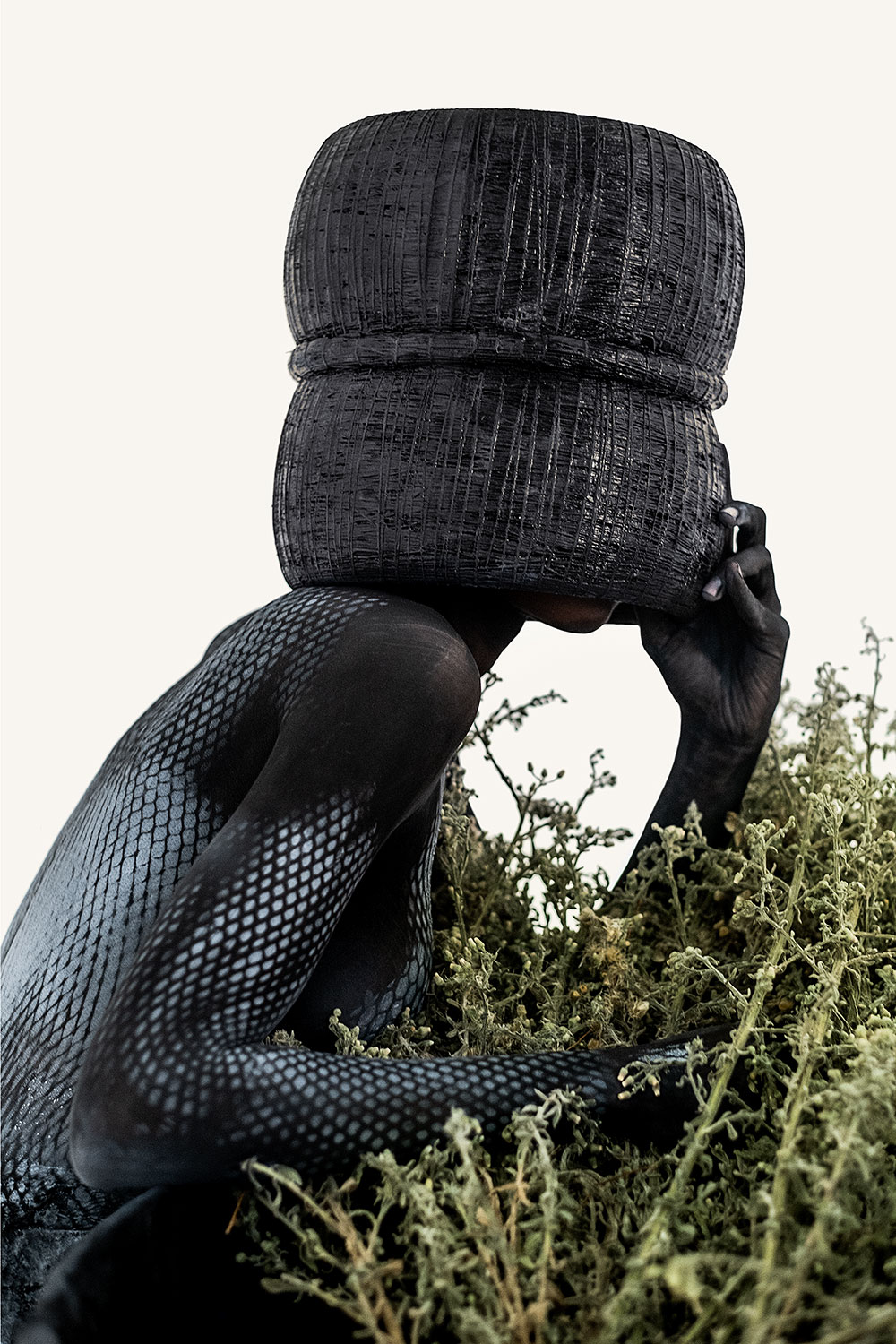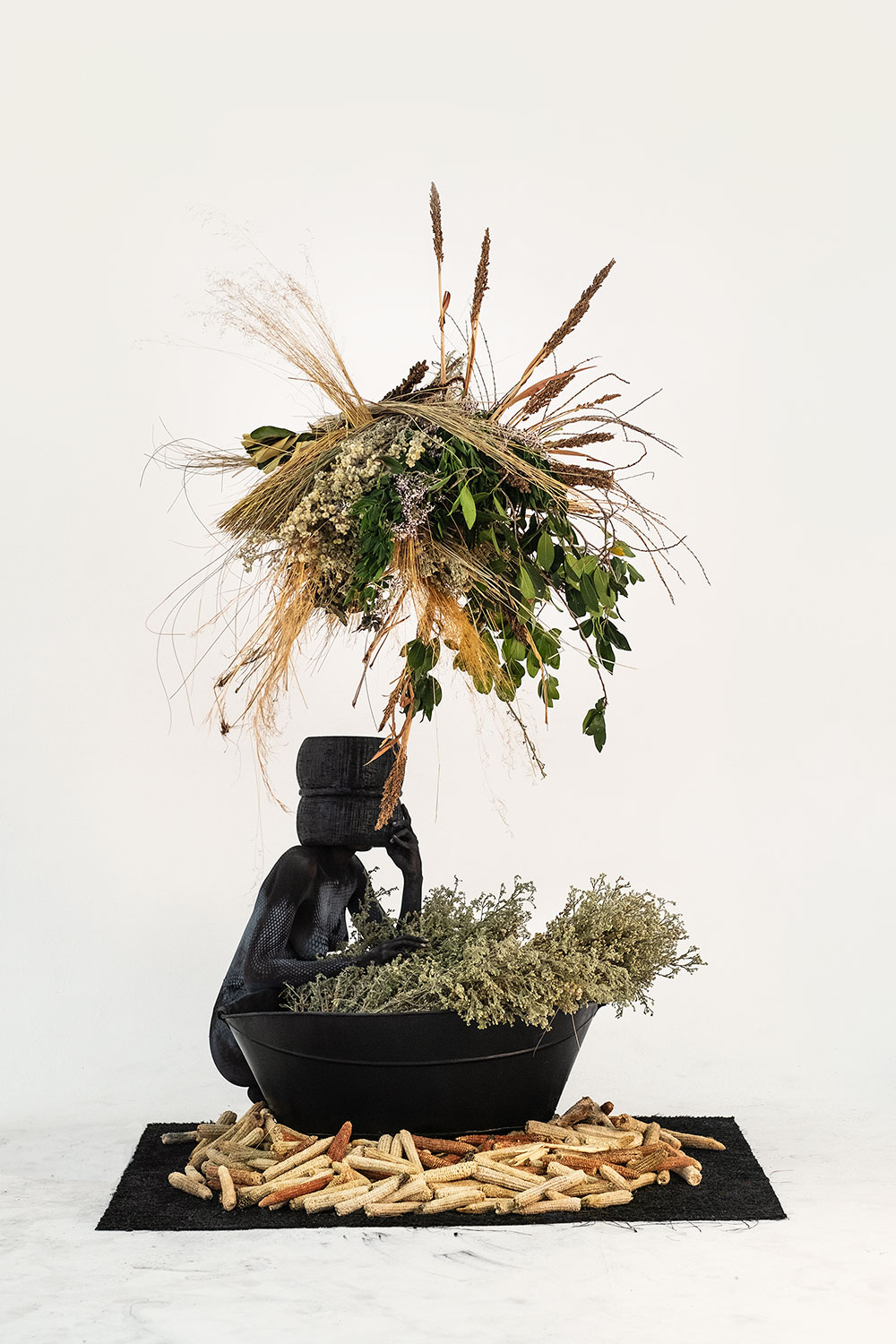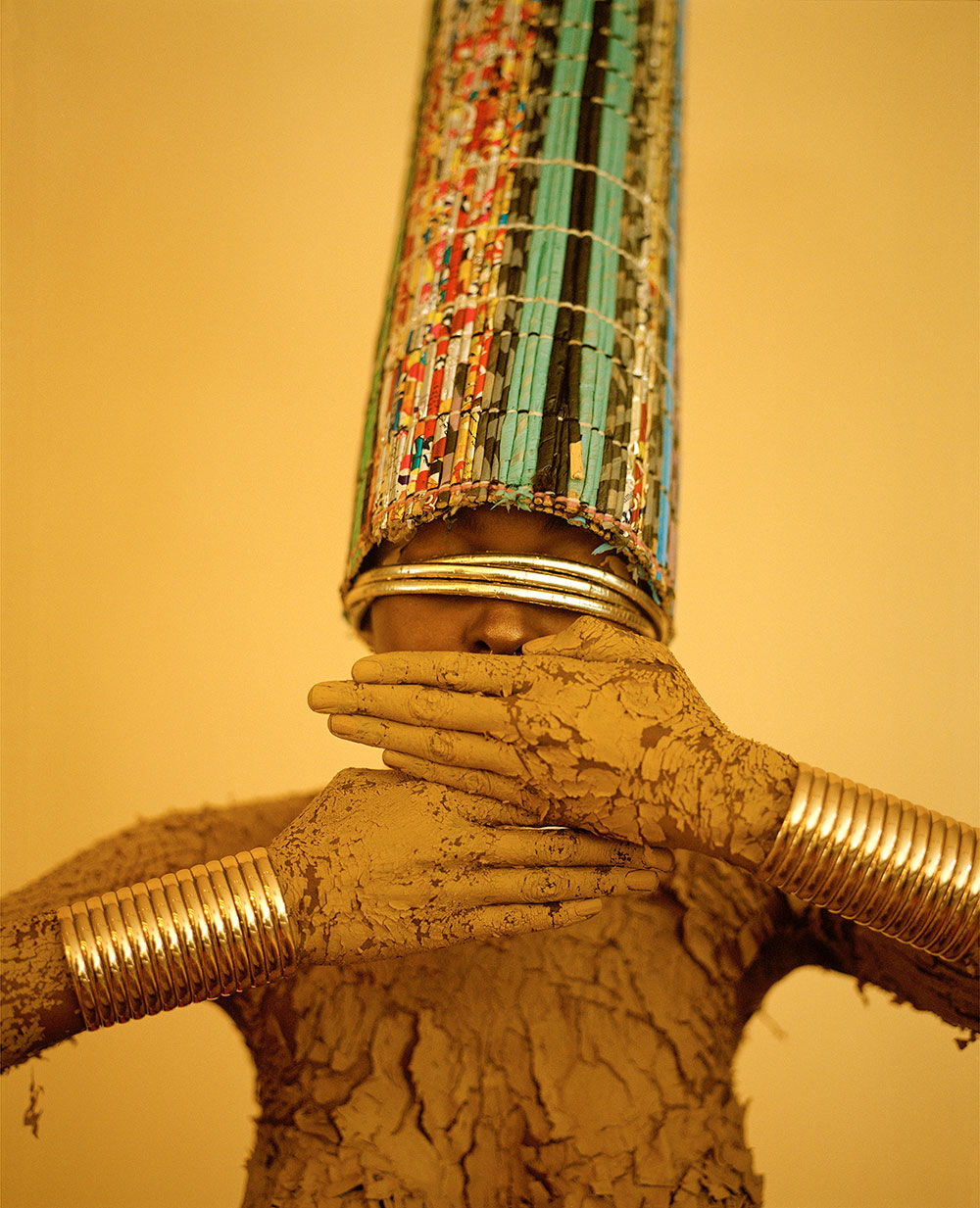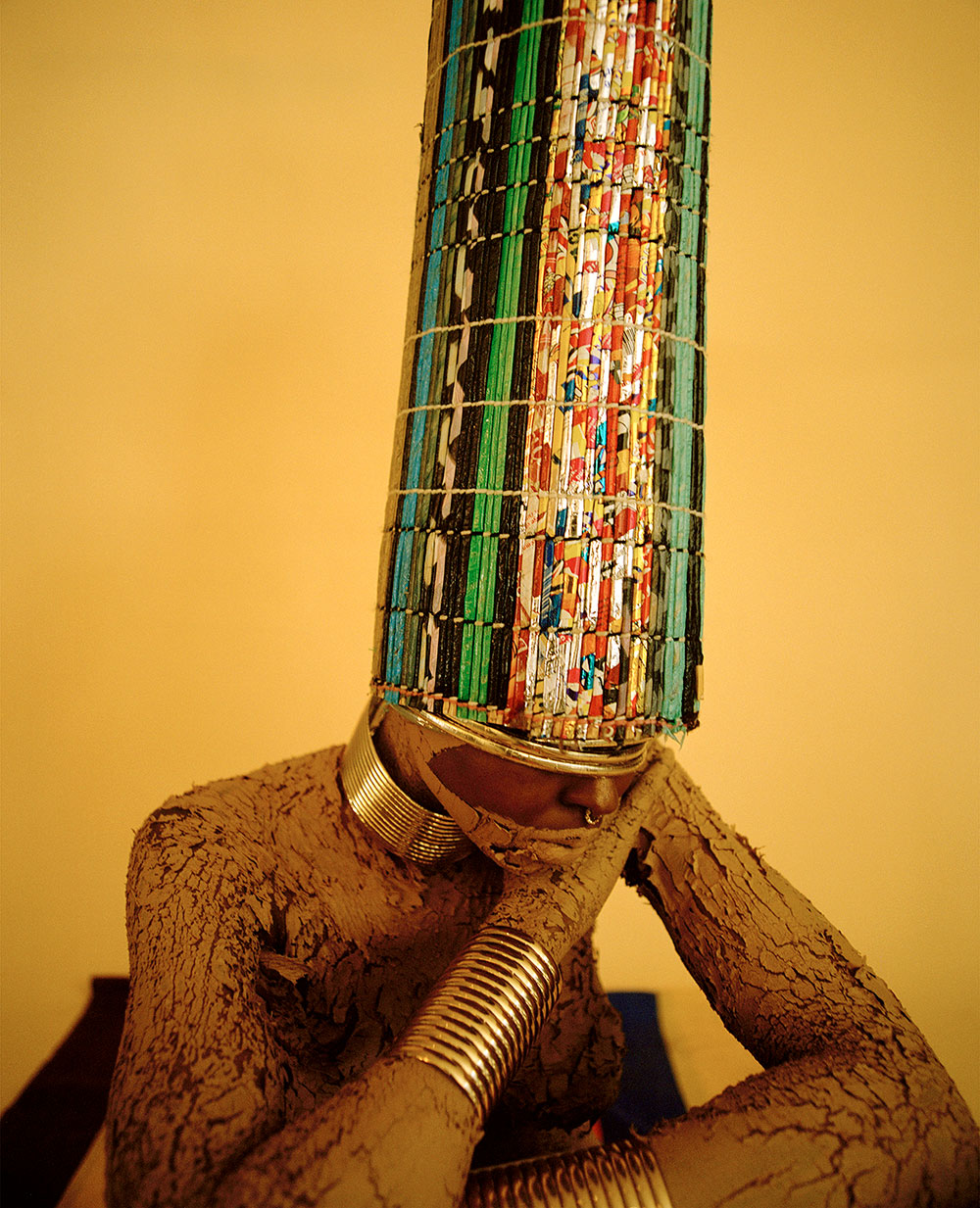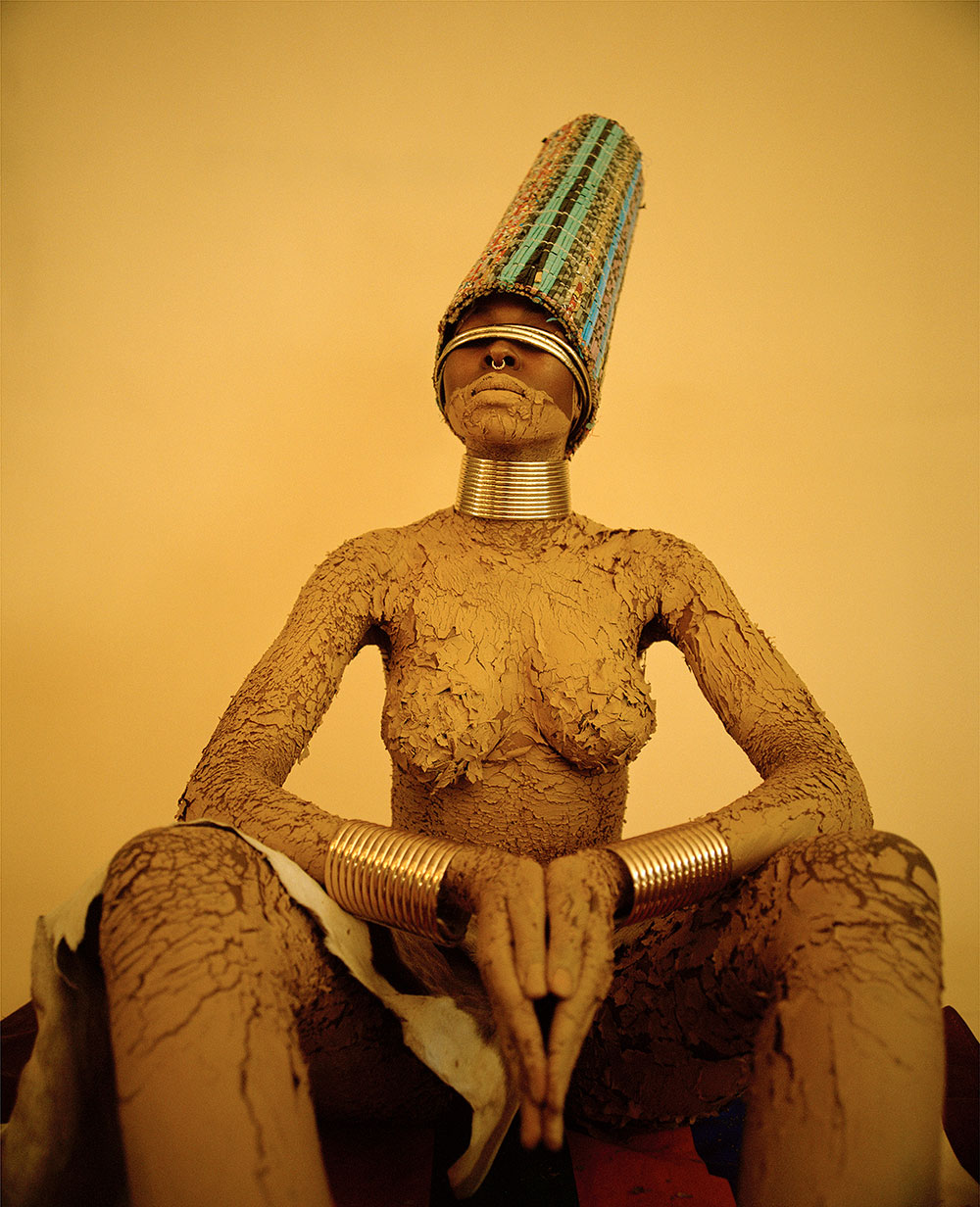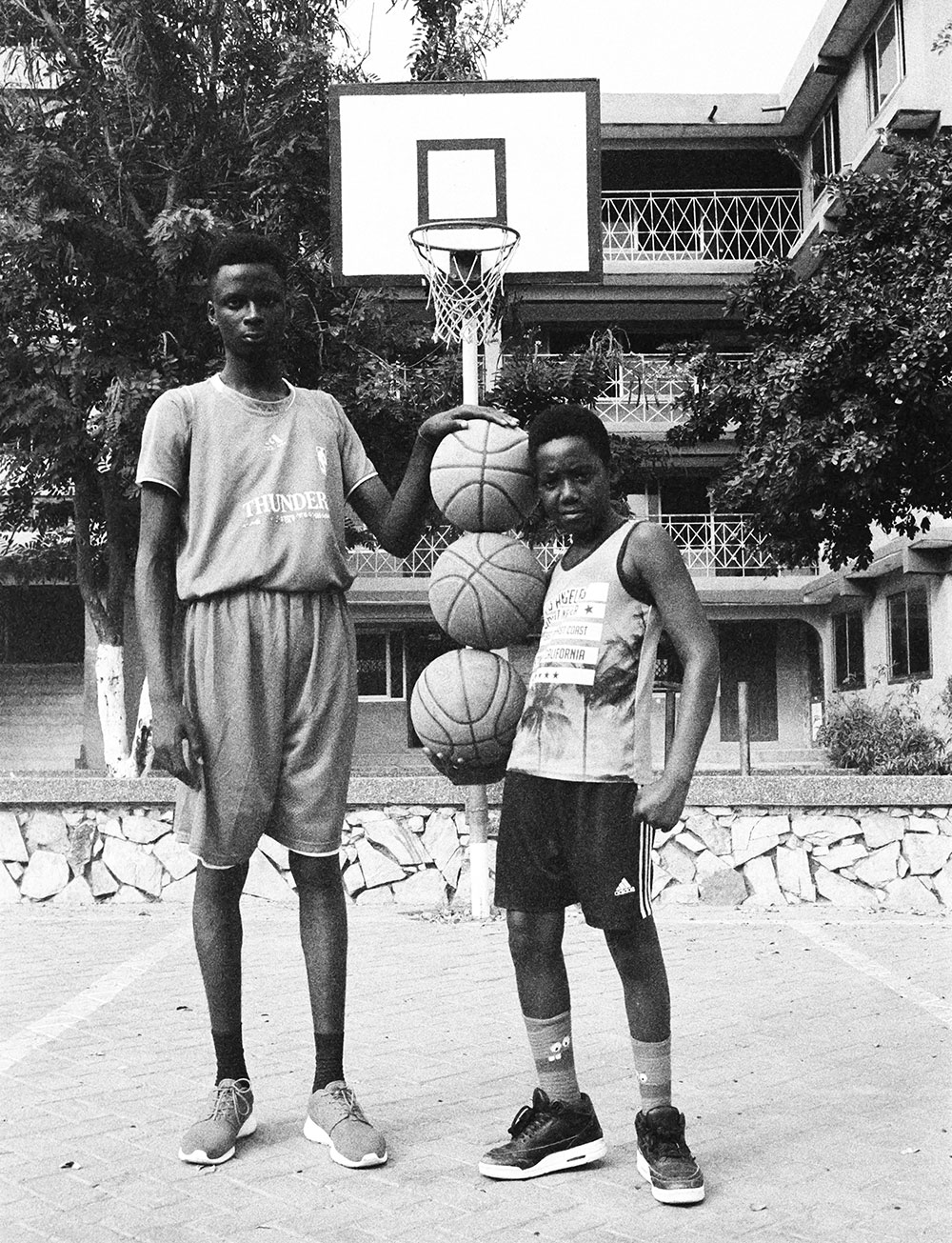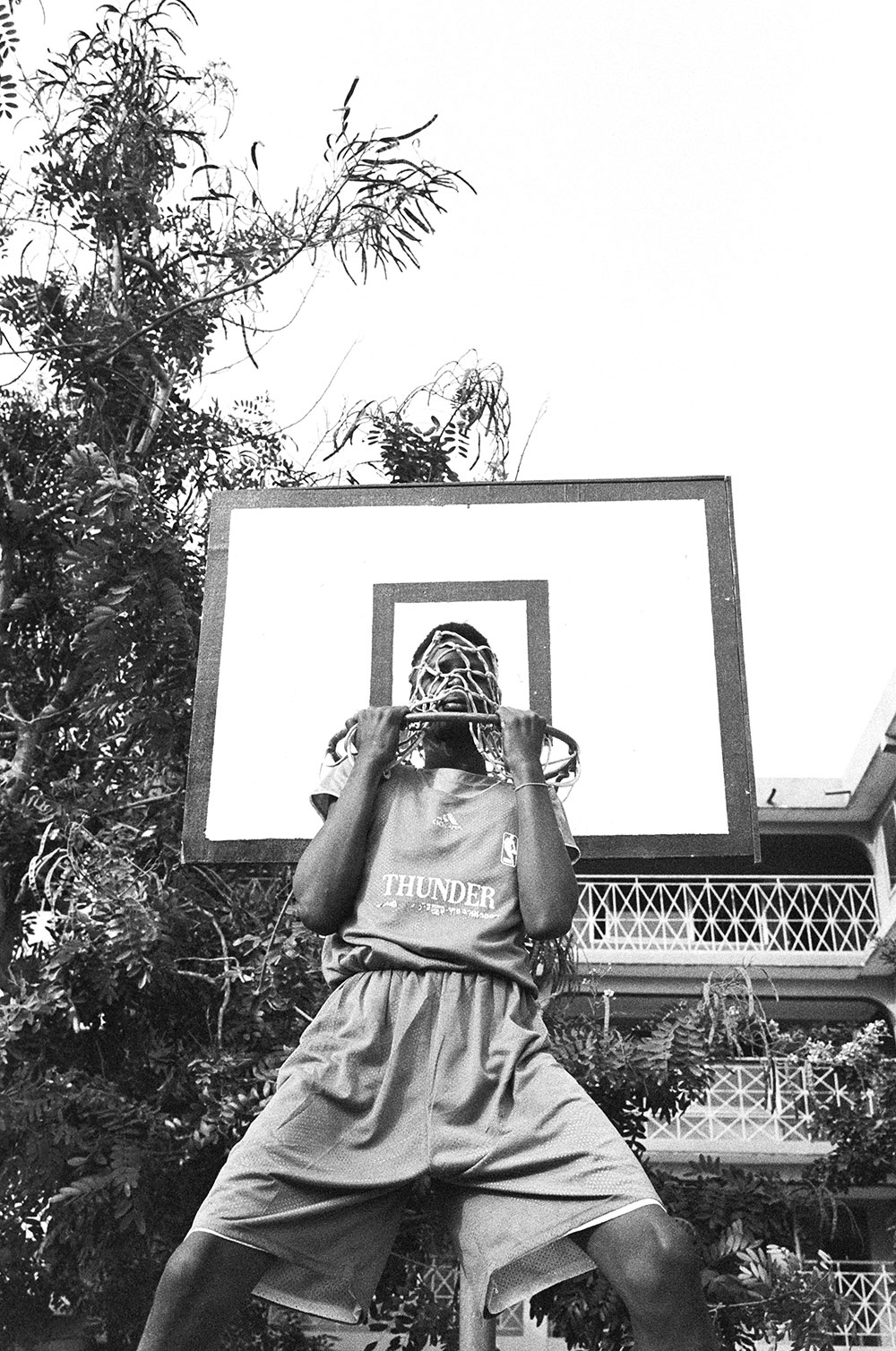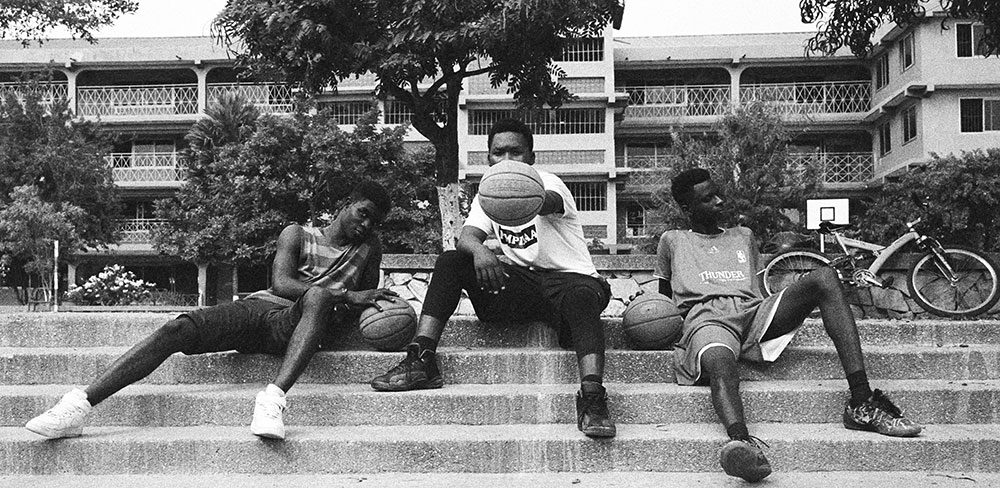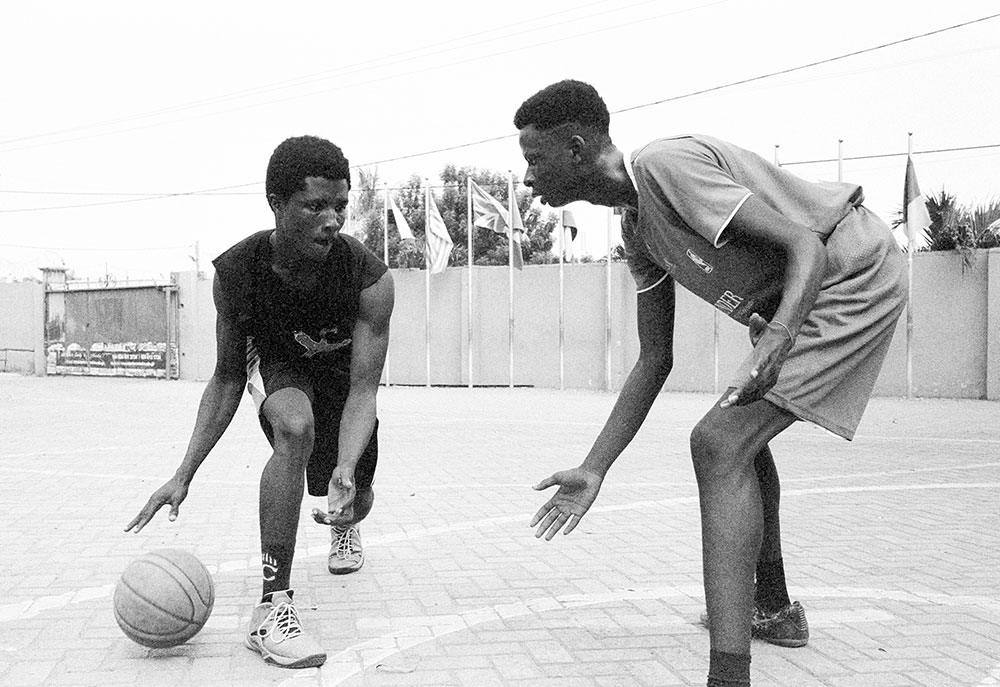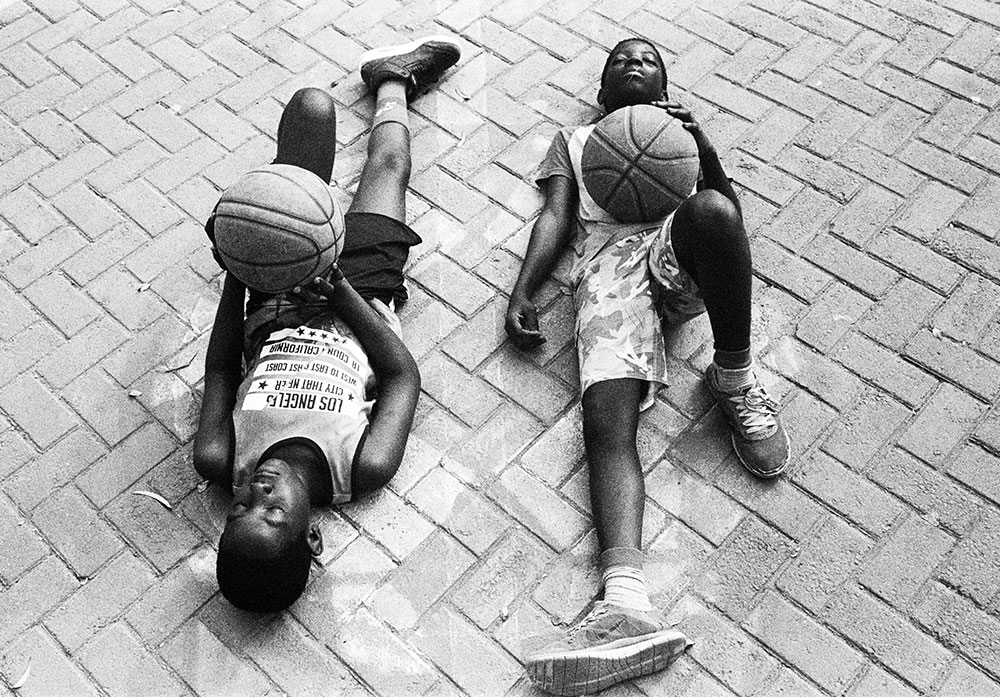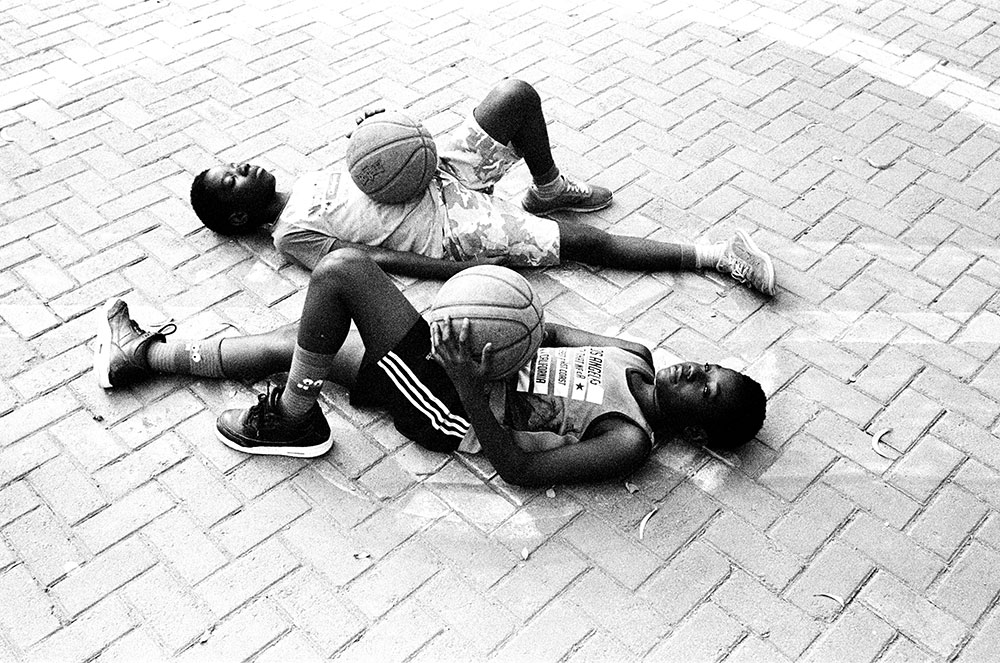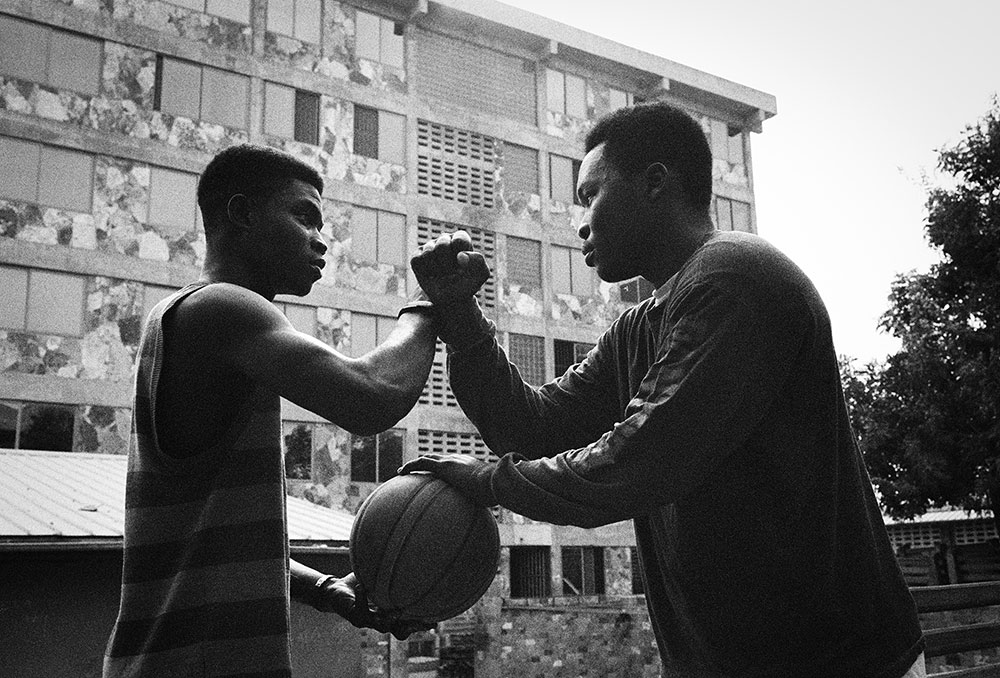Sakhile&Me's inaugural online-only exhibition Coming of Age centers on self-actualization and rituals of becoming, including building community and ways of communing with oneself and others. The phrase "coming of age" itself refers to a transition from childhood to adulthood and conjures up rites of passage, graduating children and teenagers into adulthood. Without limiting the experience of transformation and growth to age and the forward progression of time, Coming of Age offers an exploration of becoming as an ongoing growing into, rather than a move from one fixed phase to another. This expansive view evokes various entry points for discussions about what coming of age is and what rituals and forms it can take through solitude and conscious communion with others and our natural environment.
Coming of Age features video and photographic works by Zana ‘Ndebele Superhero’ Masombuka and Lloyd Foster which invite an introspective look into processes of getting to know oneself in relationship to our environment and in relation to others. Masombuka's and Foster's works visualize gradual developments and experiences of transformation that can come about through monumental life-changing events, such as grief after the loss of a loved one, as well as in every-day experiences, such as bonding with peers through learning, exchange and play. Both artists' practices involve an intuitive exploration of how individuals simultaneously grow in solitude and in communion with others.
Zana Masombuka's series "Isizungu: Demystifying Isolation" employs Ndebele cultural knowledge, color symbolism and material contrast to portray isolation as an integral part of knowing and becoming reacquainted with oneself. In part of the series, a single figure with snake-like skin crouches beside a blackened metal tub filled with branches of herbs, a mound of dried white corncobs resting at the base of the tub and a cloud made of plants suspended above; in another, a sole figure sits facing forward with dried mud peeling of their skin. In both depictions, the figure is blinded - either by a wooden roll or a shimmering headdress - but they show no indication of fear but rather a quiet confidence, the molting skin suggesting continual transition and renewal, the shedding of old skin and a growing into something new.
Lloyd Foster's series "Two Worlds, Same Energy" is a testament to the power of transmuting energies across physical distance and speaks to building community through playing basketball. In 2019, Foster co-produced a short documentary film titled "33 | DCs Game" focusing on a unique form of basketball that is native to Washington, D.C. and the surrounding metropolitan area. The film won Best Short Documentary at the DC Independent Film Festival and when one of the youth that the artist had met during his travels to visit family in Ghana saw the film online, he wrote to Foster about his interest to learn how to play 33 and teach it to his friends. Recalling his own experiences growing up and playing 33, Foster photographed youth basketball players during a subsequent visit to Ghana and "Two Worlds, Same Energy" came into being. The series depicts the exchange and passing on of knowledge through game play and between communities of youth separated by distance but connected by their shared technique and approach to basketball.
Through their respective work, Masombuka and Foster explore lessons in not only preserving but also reviving historical knowledge, and in different ways consider how isolation can be part of growing into oneself and creating community. In one, the subject becomes reacquainted with themselves in solitary introspection and through communion with nature, and in the other, we witness communion from a distance as basketball culture bridges two communities across the globe. Coming of Age embodies different ways people harness and persist on their path of growing into themselves and into the communities they are a part of.
Zana ‘Ndebele Superhero’ Masombuka's project "Isizungu: Demystifying Isolation" explores the declining use of indigenous practices in Southern Africa, with a particular focus on the region's indigenous herbs and plants. It draws a parallel between the lack of use of these plants and herbs in contemporary society and feelings of social isolation, bringing forth questions of sustainability within the African context and highlighting how traditional indigenous practices can inform the continent's response to the crisis of global warming and other socio-economic and environmental issues.
The project is based on the research of Ben Erik Van Wyk (People's Plants: A guide to useful plants of Southern Africa), Credo Mutwa (Indaba My Children), Siyakha Mguni (Termites of the Gods: San Cosmology in Southern African Rock Art), Anthony Nyong et al. (The Value of Indigenous Knowledge in Climate Mitigation and Adaptation Strategies in the African Sahel) and Julia Watson (Lo-Tek Design: Design by Radical Indigenism) as well as extensive oral history from foraging excursions with Ndebele historian Benzi Mahlangu-Masombuka, amongst others.
Their teachings assert that changes from subsistence farming to cash-crop production, migrant labor and environmental degradation have severely eroded Southern Africa's indigenous knowledge base, with communities trading in their sustainable, nature-centered lifestyle for a more exploitative and consumerist Western approach. At the same time, incorporating indigenous knowledge can add value to the development of sustainable climate change mitigation and adaptation strategies that are rich in local content and planned in conjunction with local people, allowing communities to work with resources that are available to them, without relying heavily of imported technologies.
In her performances and installations, Masombuka emphasizes the importance of indigenous practices by using plants that are native to Southern Africa and have historically been used by the region's indigenous people. The project uses the juxtaposition of warm and cold tones and colors, of the natural and the alien, of black and white to explore themes of isolation, further emphasized by the artist's repurposing of Ndebele symbols and metaphors, such as the wooden bead ring ("Is'rholwane esingana mcamo") around the figure's head, traditionally worn without beads by the relatives of a deceased family member to signify mourning, further emphasized here by the artist covering the ring in black paint. The ritualistic removal of the beads speaks to the manifested space of physical, emotional and mental isolation that families often find themselves when a loved one has died. In the work, however, the subject wears the ring to cover her head, thus amplifying the solitude experienced in this period of mourning.
The yellow/ocre in the images signifies the process of shedding ("uKuhlubuka") and its inevitable isolation, emulating a snake's shedding of its skin at the end of winter, awaiting summer. The warmer tones evoke feelings of warmth, vulnerability, renewal and protection during the shedding, acting as a metaphor and encouraging the audience not to fear their own unbecoming in times of isolation. This part of the project emphasizes a framework of evolution through indigeneity and development in isolation.
Isizungu exists in two parallel worlds, modernity and indigeneity, juxtaposed with one another and reflecting a space many of us straddle and move between today. The work projects possibilities of the two working together in order to further reveal what we know about ourselves and our humanity, calling attention to isolation and shedding as necessary anchors in the creation of self and of new worlds, where we regain balance within ourselves and the communities we are part of.
Works
Isizungu I
Photograph
2020
Digital print on archival Tecco BTT270 paper
101.2 x 67.5 cm
39 4/5 x 26 3/5 in
Edition of 8 + 2 AP
© Ndebele Superhero, Imraan Christian
Isizungu II
Photograph
2020
Digital print on archival Tecco BTT270 paper
101.2 x 67.5 cm
39 4/5 x 26 3/5 in
Edition of 8 + 2 AP
© Ndebele Superhero, Imraan Christian
Isizungu (Hlubuka) I
Photograph
2020
Digital print on archival Tecco BTT270 paper
101.2 x 82.1 cm
39 8/10 x 32 3/10 in
Edition of 8 + 2 AP
© Ndebele Superhero, Imraan Christian
Isizungu (Hlubuka) II
Photograph
2020
Digital print on archival Tecco BTT270 paper
101.2 x 82.1 cm
39 8/10 x 32 3/10 in
Edition of 8 + 2 AP
© Ndebele Superhero, Imraan Christian
Isizungu (Hlubuka) III
Photograph
2020
Digital print on archival Tecco BTT270 paper
101.2 x 82.1 cm
39 8/10 x 32 3/10 in
Edition of 8 + 2 AP
© Ndebele Superhero, Imraan Christian
The second body of work featuring in Coming of Age is Lloyd Foster's 2019 photo series "Two Worlds, Same Energy." In the artist's reflections on his own coming-of-age growing up and playing basketball in the Washington, D.C. area, he recalls shared experiences with youth he met in Accra, the capital of Ghana, a country predominantly known for soccer in the realm of sports. "Two Worlds, Same Energy" highlights some young basketball talents from the Madina neighbourhood of Accra who - motivated by the success of professional African basketball players such as Hakeem Olajuwon, Joel Embiid and Serge Ibaka - are striving to write their own story.
"Two Worlds, Same Energy" is inspired by a short documentary film Foster co-produced about a basketball game local to the Washington D.C. community in which every player plays alone and the first one to score 33 points wins. Titled "33 | DCs Game," the film may be read as a precursor to the series and aims to preserve D.C. history visually and orally amidst many of the changes the community has endured over the years.
During his visit to Ghana, Foster started connecting with local basketball players when one of them, who had seen the "33" trailer online, told him that he and his friends were interested in learning the rules for 33 and started playing the game themselves. Foster was curious about how their relationship with and through basketball would be different to his own experiences and how basketball acted as a bridge, opening up links between the two communities in Washington, D.C. and Accra. With the striking similarities of their play-action and the likeness of spirit in the game, the only thing really separating these players was an ocean.
The series "Two Worlds, Same Energy" was featured in the 9th edition of Photoville FENCE, a travelling exhibition displayed in Atlanta, Brooklyn, Calgary, Denver, Durham, Houston, New Orleans, Sarasota, Seattle and Winchester.
Works
An Ode to Washington
Photograph
2019
Giclée print on Hahnemühle FineArt Baryta
50.8 x 38.9 cm
20 x 15 1/3 in
Edition of 5 + 1 AP
© Lloyd Foster
Above the Rim
Photograph
2019
Giclée print on Hahnemühle FineArt Baryta
50.8 x 33.7 cm
20 x 13 1/4 in
Edition of 5 + 1 AP
© Lloyd Foster
Ball Up
Photograph
2019
Giclée print on Hahnemühle FineArt Baryta
37.2 x 76.2 cm
14 2/3 x 30 in
Edition of 3 + 1 AP
© Lloyd Foster
Dee Up
Photograph
2019
Giclée print on Hahnemühle FineArt Baryta
34.9 x 50.8 cm
13 3/4 x 20 in
Edition of 5 + 1 AP
© Lloyd Foster
Dreaming I
Photograph
2019
Giclée print on Hahnemühle FineArt Baryta
53.1 x 76.2 cm
20 9/10 x 30 in
Edition of 3 + 1 AP
© Lloyd Foster
Dreaming V
Photograph
2019
Giclée print on Hahnemühle FineArt Baryta
48.6 x 76.2 cm
19 1/8 x 30 in
Edition of 3 + 1 AP
© Lloyd Foster
Pound It
Photograph
2019
Giclée print on Hahnemühle FineArt Baryta
34.5 x 50.8 cm
13 3/5 x 20 in
Edition of 5 + 1 AP
© Lloyd Foster
